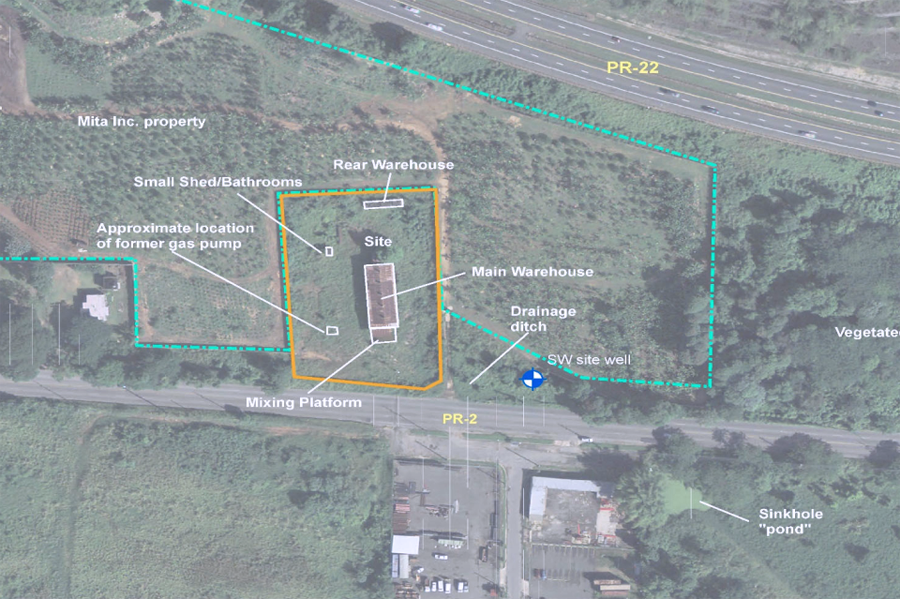EPA proposes cleanup plan of former Agrocampos property in Arecibo

The U.S. Environmental Protection Agency is proposing a cleanup plan to address contaminated soil at the former Agrocampos Inc. warehouse in Arecibo, which was used as a pesticide storage facility.
The EPA’s plan includes removing and disposing of contaminated soil from the site and the long-term monitoring of the groundwater to protect people’s health.
The facility now known as Pesticide Warehouse I was a pesticide storage warehouse that the Puerto Rico Land Authority owns, which was used for pesticide mixing and storage operations from 1953 to 2003.
In October 1999, the property was leased to Agrocampos Inc. During its years of operation, the site was used to supply pesticides for pineapple crops in the surrounding area as well as for the storage and preparation of insecticides, herbicides, and fertilizers.
Leftover and excess pesticides were discharged directly to the ground adjacent to the main warehouse resulting in soil and groundwater contamination, including significantly elevated levels of aldrin, toxaphene, and dieldrin among other hazardous contaminants, the EPA said.
A 30-day public comment period for the proposed plan will take place from July 30 to Aug. 29, 2020. A virtual presentation will be available at the following link on Aug. 6, 2020.
“Under our Superfund program, we’re proposing the best course of action to protect the public from pesticide-related contamination from this site over the long-term,” said EPA Regional Administrator Pete Lopez.
“This cleanup plan was developed in consultation with the Puerto Rico government and represents our mutual commitment to protecting human health on the island,” he said.
Under the proposed cleanup plan, the EPA is proposing to excavate and remove the upper 10 feet of contaminated soil in targeted areas of the site located along Route 2 in Arecibo.
The excavated soil, about 14,100 cubic yards, will be thermally treated before being disposed of at facilities licensed to receive the waste. The footprint of the excavation will require that the remaining dilapidated buildings at the site be demolished, the EPA said.
Furthermore, EPA will implement institutional controls to restrict the future use of the site to non-residential uses and utilize long-term monitoring of the groundwater to prevent and reduce human exposure to contaminated groundwater until the cleanup goals are met.
The agency is requiring periodic collection and analysis of groundwater samples to verify that the level and extent of contaminants are declining.
Throughout the cleanup, monitoring and further studies will be conducted to ensure the effectiveness of the remedy.
The EPA will conduct a review within five years to ensure the effectiveness of the cleanup, it concluded.












